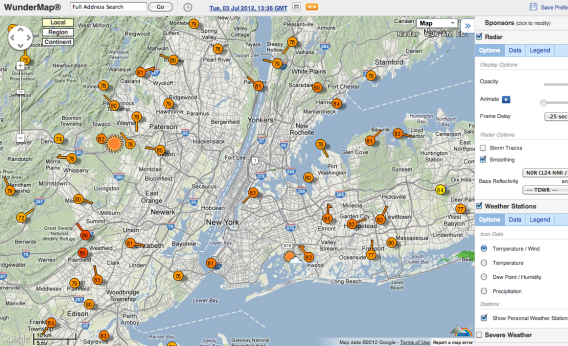After 17 years, Weather Underground is coming aboveground. The Weather Channel announced Monday that it plans to acquire the innovative weather site, whose forecasts draw on data from a network of thousands of home weather enthusiasts.
My colleague Farhad Manjoo explained in February how Weather Underground’s crowdsourcing leads to better forecasts. The Weather Channel will presumably try to harness that network to improve the forecasts on its own sites, including Weather.com, the most-visited weather site on the Web.
Whether it will entirely replace its own forecasts with Weather Underground’s BestForecast is not immediately clear. The predicitions are often substantially different. Right now, for instance, Weather.com is predicting that it will be 93 degrees in my part of New York on the Fourth of July, while Weather Underground says 99.
Weather Underground’s website, wunderground.com, will continue to operate in its current form, co-founder Jeff Masters said in a post on his popular and long-running blog. He’ll keep blogging on wunderground, and his posts will also begin to appear on Weather.com in the coming months. From his post on the acquisition:
With a swelling user base around the globe, and with demands for our services to be made available across so many new digital platforms like mobile phones and tablets, the board recognized the need for an even greater injection of resources, and the decision was made to merge with The Weather Channel Companies.
The New York Times points out that some hard-core Weather Underground enthusiasts hold “sour views” of the Weather Channel, which is owned by a group that includes Comcast and Bain Capital. But TechCrunch applauds the move from the Weather Channel’s perspective: “This deal will put Weather Underground’s awesome technology to use on a much bigger stage, bringing better information to a large number of people — which is almost always a good thing.”
